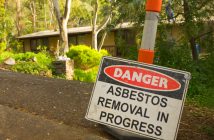The EU has estimated exposure to carcinogens to be its leading cause of work-related deaths, responsible for nearly 80,000 deaths a year. However, many exposures are preventable through risk assessment and following measures and guidelines already in place

A carcinogen is a substance that can cause, aggravate or promote cancer in humans or animals. They can be inhaled or may enter through the skin or mucous membranes. Hundreds of carcinogenic substances exist to which workers may be exposed. Many workplace exposures are generated by work processes, and carcinogens can also be found in raw materials, products or by-products.
Common examples include combustion products such as diesel exhaust emissions, welding fumes, soot and tar, bitumen and respirable crystalline silica. More detailed definitions of carcinogens can be found in EU legislation on carcinogens or mutagens at work.
While not every exposure will inevitably lead to cancer, different levels of exposure can have different effects. Some effects will occur a long time after prolonged exposure, and others can act at lower levels and occur after shorter exposure periods.
Preventing and managing exposure
A number of stringent measures – in addition to control measures required for other dangerous substances – must be taken to prevent harm caused by exposure to carcinogens at work. These include strict substitution requirements, working in a closed system, recording exposures, and stricter information and documentation requirements.
To keep workers safe, it’s vital that employers assess the risk of exposure to carcinogens and set preventive measure to take account of all possible means of exposure – including skin-related exposure, and the storage of chemicals and waste. Employers also need to provide proper on-site hygiene such as protective equipment and washing facilities.
Fortunately help is on hand for employers in the form of safety data sheets for purchased chemicals, which explain the hazards of chemicals and provide information on the handling, storage and emergency measures to take in case of accidents. For other products, employers should seek support from their suppliers, trade associations and other organisations.
Follow the law and consult/train workers
To successfully protect your workplace, workers and/or workers’ representatives should be involved in control measures and in the application of legislation. Workers must be able to assess if legislation is being applied correctly. This also means training workers on using control measures and raising awareness of invisible risks, as well as effects that might only become apparent after a long period of time.
EU-OSHA has produced a helpful info sheet on the legislative framework on dangerous substances in workplaces. You can also find out more about carcinogens by consulting the OSHwiki article on carcinogens, mutagenic and reprotoxic substances and checking the practical tools and guidance on carcinogens. Follow the campaign on Facebook, LinkedIn and Twitter for all the latest news and updates.




